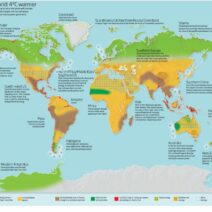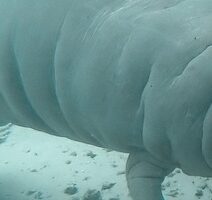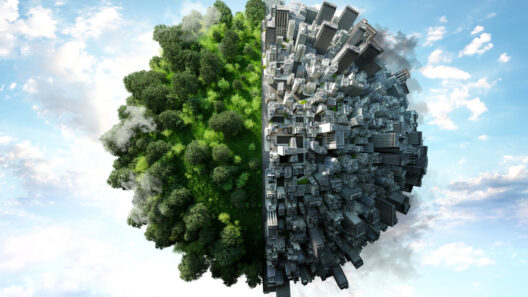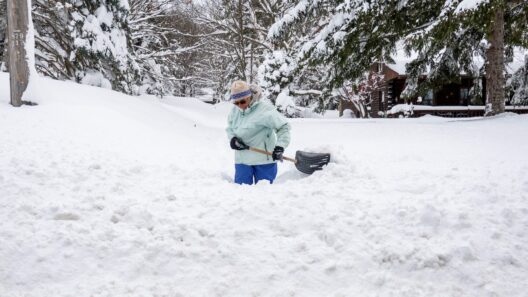In the vast, icy realms of our planet, the polar ice caps serve as the world’s thermostat, regulating temperatures and influencing global climate patterns. However, these pristine expanses are increasingly vulnerable to the ravages of global warming. The melting of polar ice caps is not merely an environmental concern; it’s a clarion call that reverberates across the globe, challenging humanity to grapple with an existential threat. The race against time is on, and the clock is steadily ticking.
The narrative of ice cap melting is not a tale told in the dim shadows of distant futures but a dramatic saga unfolding in real-time. Each year, the Arctic and Antarctic ecosystems cry out in distress as their protective ice sheets recede, akin to an artist’s canvas slowly disintegrating under weighty brushstrokes of climate change. The most alarming aspect of this phenomenon is the alarming rate at which it is occurring. Recent observations reveal that the Arctic Ocean is losing ice at a staggering pace, with summer sea ice extent declining by over 60% since the late 1970s. This alarming degradation hints at a far graver reality: an entire ecosystem on the brink of collapse.
To comprehend the nuances of this process, one must first acknowledge the scientific mechanisms behind ice melting. Global warming, driven primarily by human activities such as fossil fuel combustion, deforestation, and industrial processes, has resulted in elevated atmospheric temperatures. As the planet warms, glaciers and ice sheets meet their arduous fate. Perpetually frozen landscapes turn into flowing rivers of water, a silent but deadly transformation. These cascading torrents of sweet water—not only change the physical geography but also devastate local ecosystems that have remained undisturbed for millennia.
Therein lies the paradox: while the polar ice caps may seem remote to many, their fate has far-reaching implications for the entire planet. Melting polar ice is a harbinger of rising sea levels. The World Meteorological Organization estimates that sea levels could rise by over three feet by the year 2100 if current trends continue. Coastal cities, once bastions of civilization, risk becoming submerged relics. Cities like Miami, Jakarta, and Venice could soon face inundation, leading to geopolitical instability and humanitarian crises that know no borders.
Additionally, the melting ice caps disrupt global weather patterns, significantly impacting agricultural sectors and water availability. The temperature imbalance induced by the loss of reflective ice—often referred to as the albedo effect—creates chaotic weather anomalies. Regions that once thrived on predictable climate conditions experience erratic weather behavior, resulting in drought in some areas and flooding in others. Such unpredictability jeopardizes food security, unraveling the delicate tapestry of ecosystems that humankind relies on.
As the ice continues to weaken, the realm of the Arctic bears witness to a chilling phenomenon: the proliferation of methane release, a potent greenhouse gas trapped beneath the ice. The process resembles an ancient dragon awakening from a long slumber, releasing its fiery breath into the atmosphere, further exacerbating warming. This ominous feedback loop positions the melting polar ice caps not merely as a consequence of climate change but as a catalyst that accelerates its progression. The intertwined destinies of the ice caps and climate pale in comparison to the imminent geological upheaval on the horizon.
Yet, the narrative doesn’t end with loss and despair. Humanity possesses the power to reshape this trajectory through concerted effort and innovation. Technological advancements have opened new avenues for mitigating climate change. Renewable energy sources, such as solar and wind, offer promising pathways toward achieving carbon neutrality. These alternatives can curtail greenhouse gas emissions and slow the relentless march of global warming, providing an antidote to the tragic tale of the vanishing ice caps.
Moreover, global collaboration is paramount. Initiatives like the Paris Agreement foster unity against climate change, compelling nations to commit to emission reductions that directly curb polar ice melting. Simultaneously, grassroots movements continue to advocate for systemic change, emphasizing the message that every action, no matter how minute, counts. The journey toward environmental stewardship requires a concerted effort from individuals, corporations, and governments alike. The urgency of the moment demands a collective response, forging an unbreakable alliance against our warming world.
The clock is not merely ticking; it is a drumbeat echoing through the halls of time. As ice sheets become specters of the past, humanity must rally before we lose our last bastion of hope. Each melted inch of ice signifies not just a loss of habitat for polar bears and seals, but a fractured promise to preserve our planet for future generations. The melting of polar ice caps is a poignant reminder that we play an integral role in shaping the world around us. A unified front against climate change is not simply an option; it is our moral imperative in the race against time.
In conclusion, the fate of the polar ice caps encapsulates the broader narrative of our planet’s health and our own survival. The interplay of warming temperatures, rising seas, and unpredictable climates is a complex dance that requires deft leadership and wholehearted commitment. As stewards of this beautiful Earth, we must not allow the mesmerizing beauty of our polar regions to fade into oblivion. Instead, let us heed the clarion call, awaken to our responsibilities, and strive diligently to stave off the impending crisis that challenges not only our environment but our very essence as a civilization.







